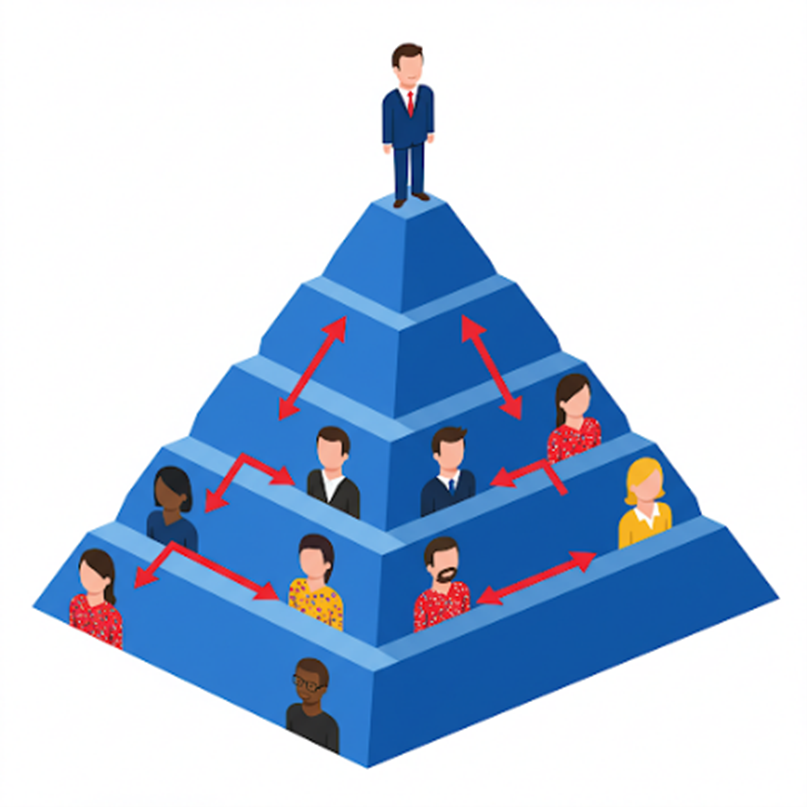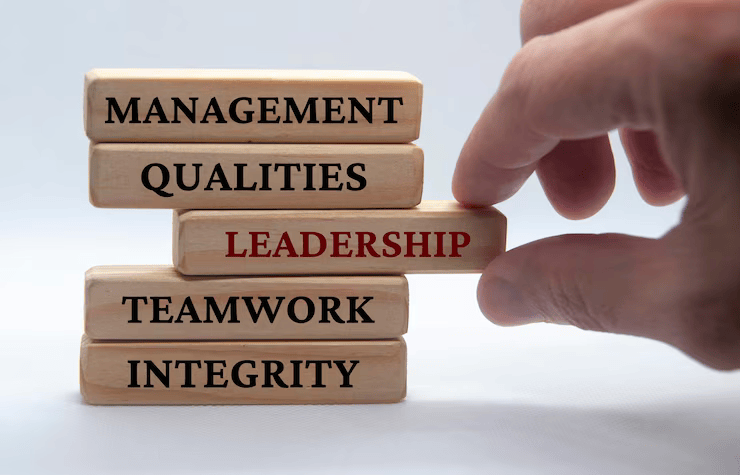Leadership isn’t confined to corner offices or grand pronouncements; it permeates every layer of an organization, shaping its culture, driving performance, and ultimately determining its success. The impact of a leader’s actions, both positive and negative, ripples through the entire structure, influencing individuals and teams in profound ways. Take an example of many successful organizations like Google, or Apple for Instance their continuous Innovation and a strong vision of the leader made these organizations achieved pinnacle of their success. The culture of Google supports employees’ empowerment. They are given autonomy with strong accountability for whichever task they are allotted. Teams are given flexibility to the way they approach their work, which allows them to take risks, and pursue a creative solution to their goals.

The Foundation: Setting the Tone and Vision
At the highest level, leadership sets the strategic direction and establishes the organization’s core values. This vision acts as a compass, guiding every decision and action. When leaders articulate a clear, compelling vision, employees understand their role in the bigger picture, fostering a sense of purpose and alignment. Conversely, a lack of clear direction leads to confusion, disengagement, and a fragmented workforce.
Leaders also establish ethical and cultural tones. Their behavior sets the standard for integrity, respect, and accountability. If leaders prioritize transparency and ethical conduct, employees are more likely to follow suit. Conversely, hypocrisy or a culture of fear can poison the entire organization, leading to distrust and a decline in morale.
Mid-Level Management: Translating Vision into Action

Mid-level managers are the critical link between senior leadership and frontline employees. They translate the organization’s vision into actionable plans and provide the necessary support and guidance. Their leadership style directly impacts team performance and individual development.
Effective mid-level managers empower their teams, foster collaboration, and provide constructive feedback. They act as coaches, mentors, and advocates, helping employees develop their skills and reach their full potential. In contrast, micromanagement, lack of communication, or favoritism can stifle creativity, hinder productivity, and create a toxic work environment.
Frontline Employees: The Face of the Organization
Frontline employees are the face of the organization, interacting directly with customers and clients. Their experience is heavily influenced by the leadership they receive from their immediate supervisors.
When frontline leaders prioritize employee well-being, provide clear expectations, and offer opportunities for growth, employees are more likely to be engaged and motivated. This translates to improved customer service, higher productivity, and increased loyalty. Conversely, poor leadership on the frontline can lead to high turnover, low morale, and a negative impact on customer satisfaction.
The Ripple Effect: Culture, Communication, and Performance
The impact of leadership extends beyond individual teams and departments, shaping the overall organizational culture. Effective leaders foster a culture of open communication, collaboration, and continuous improvement. They encourage feedback, celebrate successes, and learn from failures. This creates a positive and supportive environment where employees feel valued and empowered.
Conversely, poor leadership can lead to a culture of blame, fear, and stagnation. When communication is poor, information silos develop, and collaboration breaks down. This hinders innovation, reduces efficiency, and ultimately impacts the organization’s bottom line.
Impact on Performance and Innovation
Leadership directly influences organizational performance. Effective leaders create a high-performance culture by setting clear goals, providing necessary resources, and holding employees accountable. They also foster a culture of innovation by encouraging experimentation, taking calculated risks, and celebrating creativity.
Poor leadership, on the other hand, can stifle innovation and hinder performance. A lack of clear goals, inadequate resources, and a fear of failure can prevent employees from taking risks and exploring new ideas. This can lead to stagnation and a decline in competitiveness.
The Power of Influence

Ultimately, leadership is about influence. Leaders who inspire, motivate, and empower their employees create a positive and productive work environment. Their influence extends beyond their immediate team, shaping the entire organization and driving its success.
To summarize, a leader’s reach extends throughout every facet of an organization.
- Strategic Direction: Leaders set the overarching vision.
- Cultural Backbone: Leaders model ethical behavior and define the organizational climate.
- Operational Bridge: Mid-level managers translate strategy into actionable tasks.
- Customer Experience: Frontline leaders shape employee-customer interaction.
- Organizational Culture: Leaders cultivate communication, collaboration, and growth.
- Performance and Innovation: Leaders drive productivity and foster creative thinking.
By understanding the far-reaching impact of their actions, leaders can create a positive and thriving organization where employees are engaged, motivated, and empowered to succeed. Every organization needs one strong and Visionary leader who can decide and shape the future of the organization and his team.

